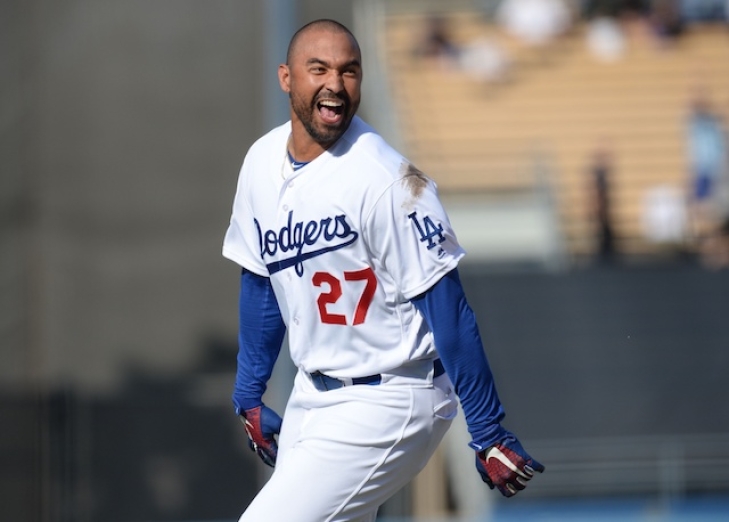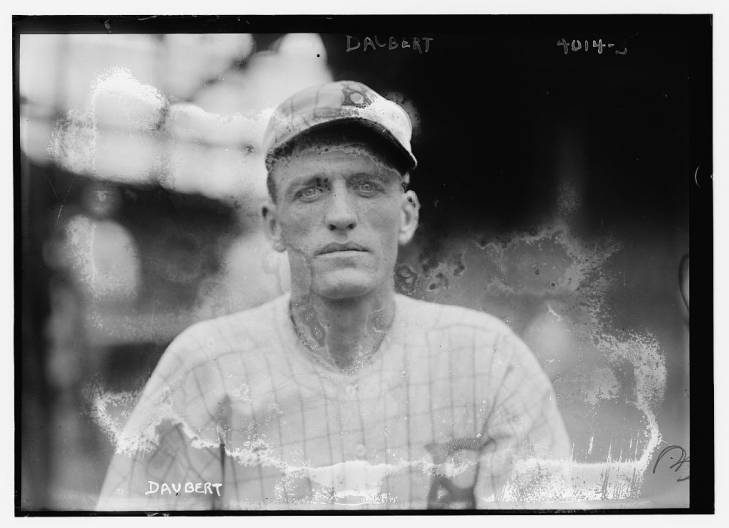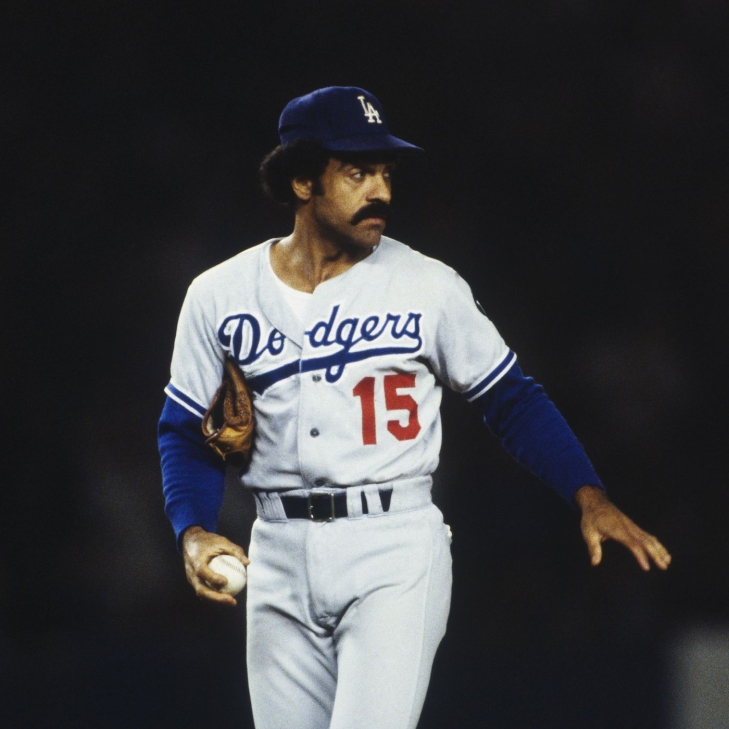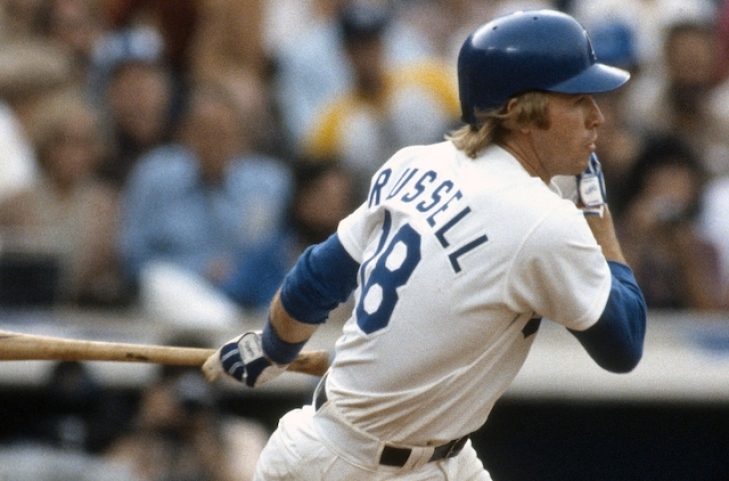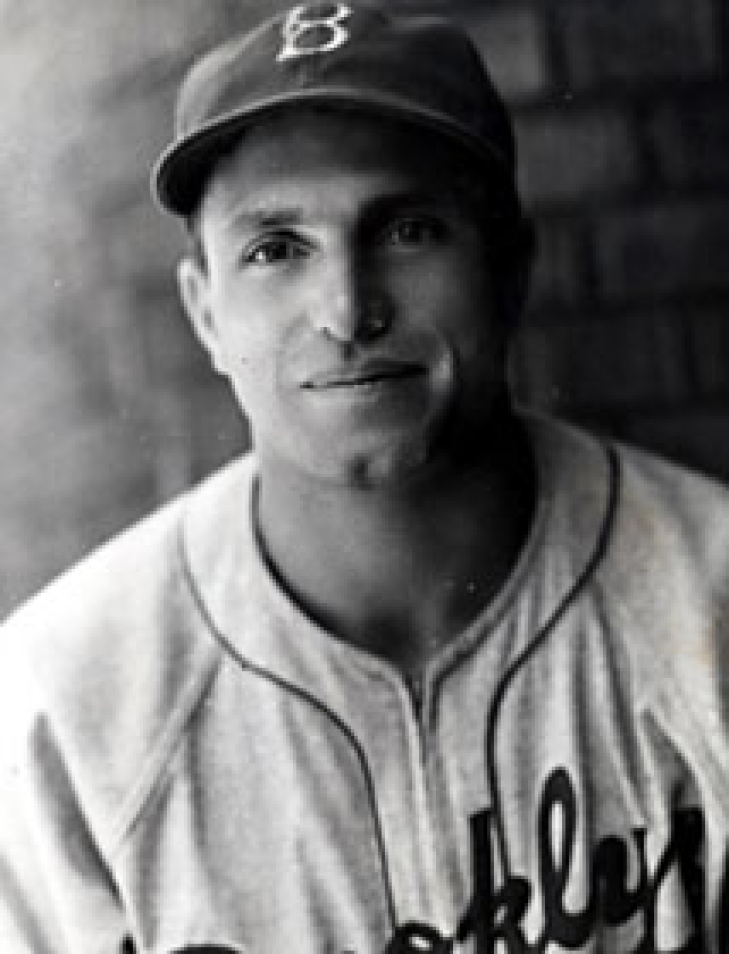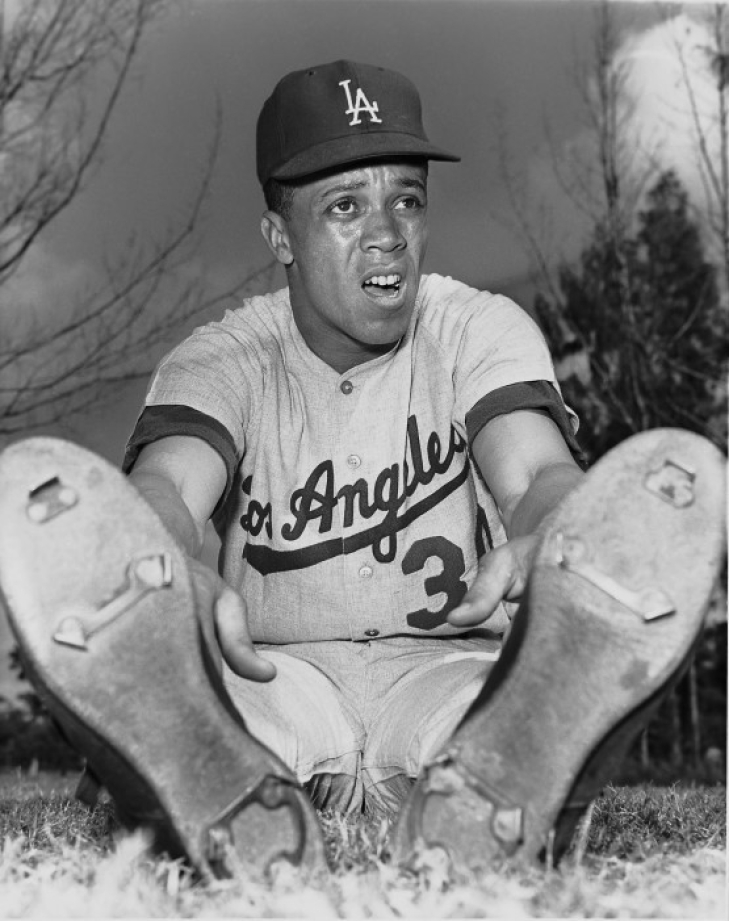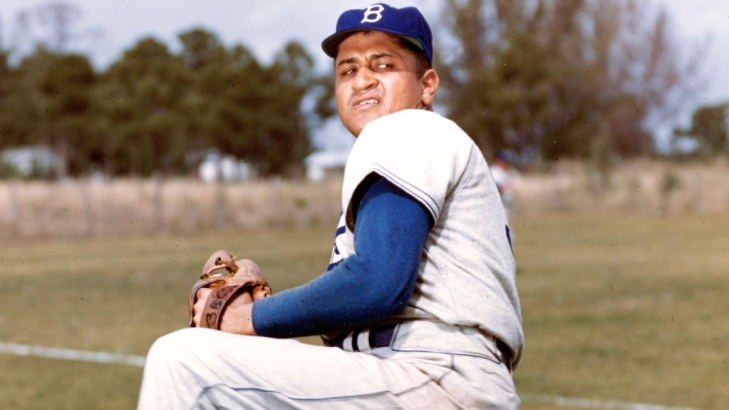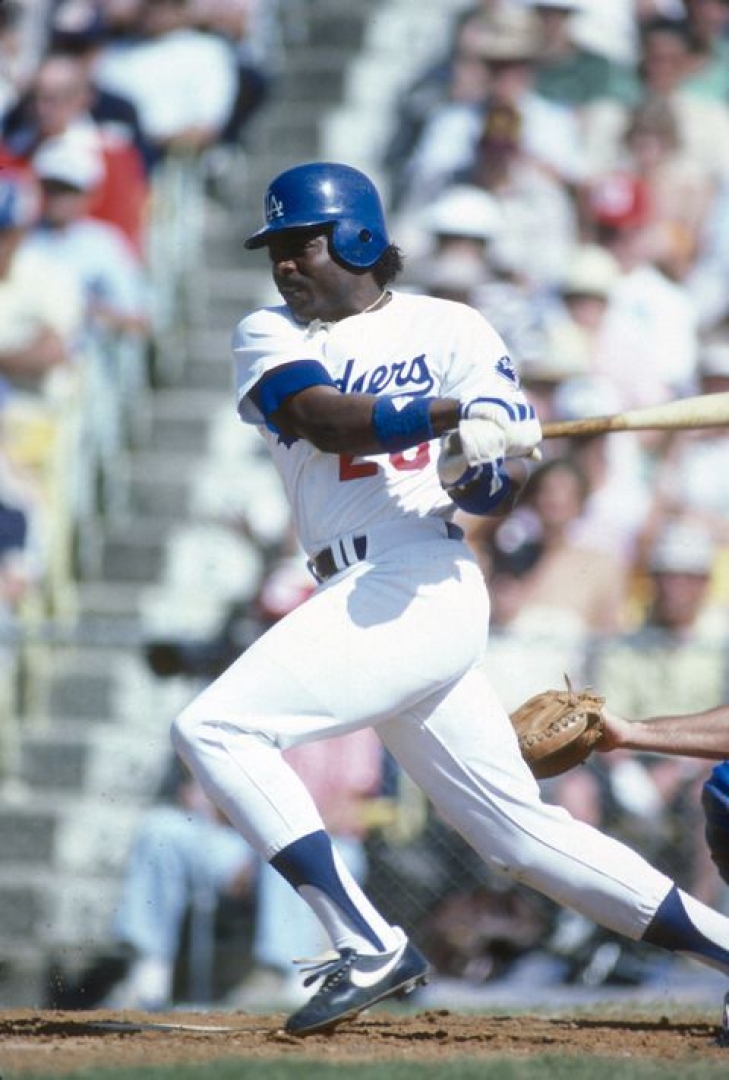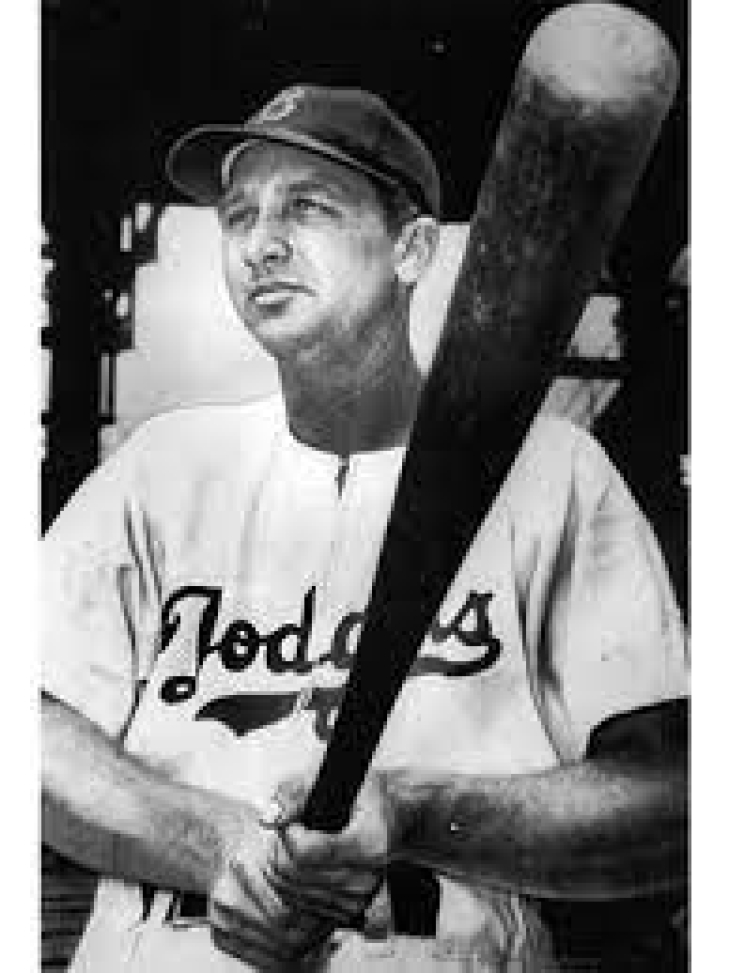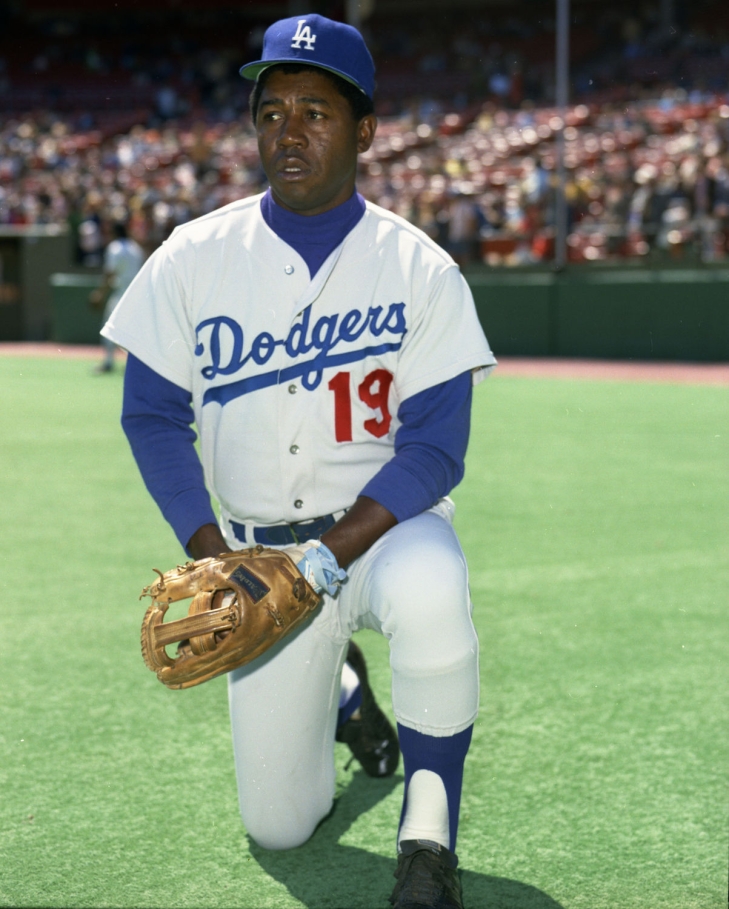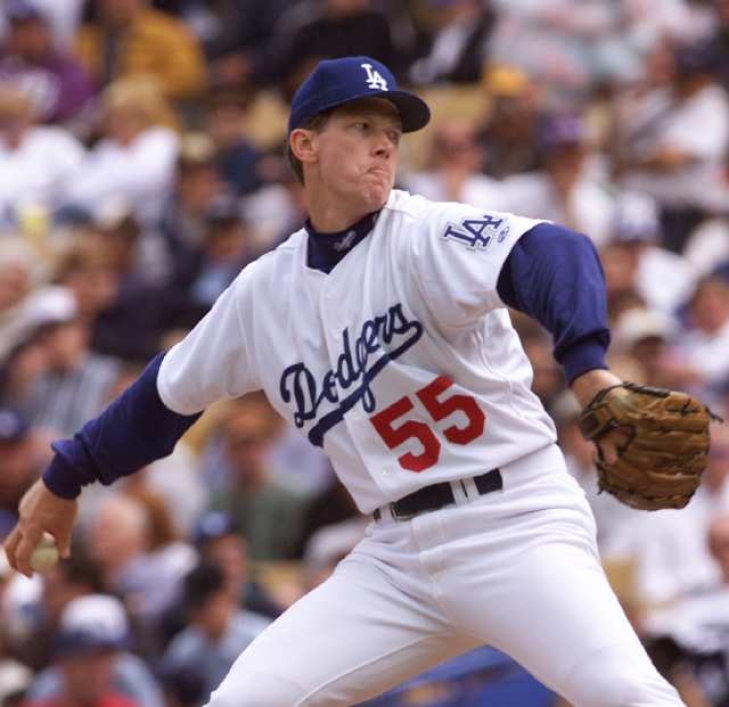Warning: Attempt to read property "params" on null in /home/notinhal/public_html/plugins/k2/k2canonical/k2canonical.php on line 382
44. Matt Kemp
Matt Kemp joined the Los Angeles Dodgers in late 2006 after three years in the Minors, but it was not for another two seasons that he established himself as an everyday Outfielder. Breaking out in 2009 with a 26 HR/101 RBI/34 SB year where he won the Silver Slugger and Gold Glove, Kemp was tenth in MVP voting, and Los Angeles thought they had a potential megastar. After a decent 2010, Kemp had one of the best seasons of a player who didn't win the MVP. Kemp's 2011 saw him finish one Home Run shy of a 40/40 year, but he still led the NL in taters. Adding a second Gold Glove and Silver Slugger, Kemp also led the NL in Runs (115), RBIs (126), and OPS+ (176). It was a phenomenal year, but that was the only campaign Kemp would have that could be categorized as such.
Kemp was still a good power hitter, belting 20 or more Home Runs six more times, but he only stole 42 more Bases after his 40 SB year. The Dodgers traded Kemp to San Diego after the 2014 Season, and he bounced around with stops in Atlanta and Los Angeles for a second time for one solid year in 2018, where he added a third All-Star Game appearance.
With the Dodgers, Kemp blasted 203 Home Runs with 170 Stolen Bases and 1,322 Hits.
33. Jeff Pfeffer
Jeff Pfeffer was a very good Pitcher for Brooklyn in the 1910s, who, from 1913 to 1914, was one of the more competent players on the mound in the National League.
Pfeffer had only played seven Major League Games before the 1914 Season (two were with the St. Louis Browns in 1911), and would have likely won the 1914 Rookie of the Year, had there been one. This began a three-year run as a top Pitcher, where he went 66-37 with a 1.99 ERA and a WHIP of 1.081. Pfeffer helped Brooklyn win the Pennant that year, and though they lost to Boston, with Pfeffer taking a Loss, he was solid in defeat.
Pfeffer slumped in 1917 and was in the Navy in 1918, only playing one Game that year. Upon his return to the Majors in 1919, he had two good years for Brooklyn, but a poor start in 1921 saw him traded to the Cardinals.
With the Robins, Pfeffer had a 2.31 ERA with a record of 113 and 80.
37. Van Mungo
Van Mungo was one of the most eccentric figures in Baseball, or would volatile be a better word?
Mungo did not have the luxury of playing for Brooklyn when they were a National League power, but that was no fault of Mungo, who went to four consecutive All-Star Games (1934-37). Known for an erratic fastball, heavy drinking, and a volatile temper, Mungo was the stuff of fables, but he was also a very competent hurler. His wildness was shown by leading the NL in Walks three times, but he also once led the league in Strikeouts and three times in SO/9.
Mungo's play fell off in the late 1930s, and was traded to a Minor League Team in 1941. With the Dodgers, Mungo went 102-99 with a 3.41 ERA.
38. Watty Clark
After a brief run in 1924 with the Cleveland Indians, it was back to the Minors for two years before the Brooklyn Robins signed Watty Clark.
In his second year with Brooklyn (1928), Clark proved he was there to stay, and he was a member of their starting rotation for the next four years as the top hurler on a mediocre team. Clark led the NL in FIP in 1929 and 1932, with the latter year seeing him earn his lone 20-Win Season.
Traded to the Giants during the 1933 Season, Clark was re-acquired by Brooklyn a summer later, but he only had one productive year in him before he rapidly declined and was out of the Majors after two Games in 1937.
For the Dodgers, Clark went 106-88 with a 3.55 ERA.
35. Jake Daubert
Jake Daubert initially thought that his first crack at the Majors would be with Cleveland, who signed him in 1908, but he never played there and was released shortly after. A second opportunity struck a year later with Brooklyn, and this time it stuck.
Playing at First Base, Daubert had a pedestrian rookie year, batting .264 with 146 Hits, but he then went on a six-year streak where he batted over.300. This included back-to-back Batting Titles in 1913 and 1914, with him winning the Chalmers Award, which was then the version of the MVP. He also exhibited solid speed, swiping at least 20 Bases in six of his seasons in Brooklyn.
Daubert was traded to Cincinnati in 1919, leaving Brooklyn with 1,387 Hits and a Batting Average of .305.
27. Justin Turner
Can you imagine Justin Turner as anything other than a Los Angeles Dodger? He was, and it can also be argued that he was lucky to ever play in L.A., as Turner seemed to have two steps away from the diamond.
Turner first made the Majors in 2009 with Baltimore and would later spend time with the Mets, but he was not impressive for either team and was non-tendered in 2013, making him a Free Agent. He was signed by the Dodgers for an opportunity while starring at a Cal-State Fullerton alumni Game, and he made the Los Angeles roster in 2014 and was set to unshackle his past performance.
Due to injuries to other players, Turner got a chance to play regularly, and he responded by batting .340 in 109 Games and became an even better player as he entered his 30s. In 2016, he had a career-high 27 Home Runs and was ninth in MVP voting, which he followed up with a 21 Home Run year with an OPS is .945. Turner went to his first All-Star Game that year and was eighth in MVP voting.
The popular redhead did not have another top-ten MVP finish but still provided very good baseball, having two more 27 Home Run years, adding a second All-Star in 2021, and winning a World Series Ring in 2020. Last season, Turner won the prestigious Roberto Clemente Award, which is given annually to the players who best exemplify the game of baseball, sportsmanship, and community involvement.
The popular player is still a Dodger as of this writing and could climb up a few more spots.
30. Davey Lopes
Davey Lopes made his Major League debut with Los Angeles in 1972 and won the starting job at Second Base the following year.
Lopes utilized his speed not only in the field but on the basepaths, where he led the National League in Stolen Bases in 1975 (77) and 1976 (63) and had a seven-year run where he swiped at least 20 bags (1973-79). A natural leader in the clubhouse, Lopes developed a more complete game, developing a power game, peaking with an unexpected 28 Home Run year in 1979. An All-Star annually from 1978 to 1981, Lopes helped the Dodgers win the World Series in the last of those years, coincidentally his previous in L.A., as he was traded north to Oakland.
With the Dodgers, Lopes batted .262 with 1,204 Hits and 418 Stolen Bases.
Lopes parlayed his leadership skill into a successful career as a Coach, winning a second World Series Ring with the Phillies in 2008.
26. Bill Russell
A member of the Los Angeles Dodgers for the entirety of his Major League career, Bill Russell began his Major League career in the Outfield, but it was when he took over for Maury Wills at Shortstop in 1972 that his value became apparent.
Russell remained L.A.’s starting Shortstop for well over a decade, and defensively he was in the upper class. He led the NL in Defensive bWAR in 1973, and four other times was in the top ten. Russell also led the NL in Assists in '73, with three additional years seeing him finish third.
Russell had limited power with his bat, but he collected 1,926 Hits over his career with a respectable .263 Batting Average. A three-time All-Star, Russell was a key figure in the Dodgers' 1981 World Series win.
28. Dolph Camilli
Dolph Camilli began his Major League career with the Chicago Cubs, but it was his second team, the Philadelphia Phillies, where he proved that he was an everyday player. The Dodgers took notice and traded for him, feeling that he had another level in him. They were right.
Becoming a Dodger in 1938, Camilli led the NL in Walks that year and did so again in 1939, his first All-Star Game season. Camilli continued to smack Home Runs, belting at least 23 in his first two years in Brooklyn, with the latter two years seeing the First Baseman finish 12th in MVP voting, but the best was still ahead of him.
Camilli won the 1941 MVP when he led the NL in Home Runs (34) and RBIs (120) while going to his second All-Star Game. He had another good season in 1942, but the Dodgers saw that he was aging out, and he was traded to the New York Giants during the 1943 Season. Camilli refused to report to the Giants and would only play one more half-season in the Majors with the Red Sox in 1945.
With the Dodgers, Camilli batted .270 with 139 Home Runs and 809 Hits.
29. Johnny Podres
Johnny Podres was one of the most successful southpaws in Dodgers history, especially when you look at the postseason.
Debuting for Brooklyn in 1953, Podres came into his own in the 1955 World Series, winning the MVP of a 2-0 record and a 1.00 ERA over the Yankees. Podres had arrived, but he had to take a year off for military service, though he picked up right where he left off upon his return.
Podres led the NL in ERA (2.66), Shutouts (6), and WHIP (1.082) in what was arguably his finest season in baseball. He was still an integral player for years to come as the franchise moved to Los Angeles, earning All-Star trips in 1958, 1960, and 1962.
Sandy Koufax had become the undisputed ace of the Dodgers staff, but Podres was still a valuable commodity, with solid contributions in L.A.’s 1959 and 1965 Championships. Podres was traded to Detroit during the 1966 Season, but by that time, he was no longer a valuable member of the rotation.
With the Dodgers, Podres had a record of 136-104 with 1,331 Strikeouts.
24. Maury Wills
Maury Wills might be known first in any baseball reference guide as the National League MVP award winner in 1962, but his real contribution was how he changed the perception of how runs could be scored. Wills was not the first man to be a star on the base paths, but he did usher in its renaissance. Wills was the first to steal over 100 bases, and it wasn't long before teams across the country looked for a Wills-type player to lead off their lineup. Wills would go on to lead the NL in steals on six occasions.
Maury Wills, however, was not the perfect leadoff man. Wills did not walk enough, and his overall On Base Percentage was not ideal. He also suffered from a post-playing career where his managing stint with Seattle is considered the worst in baseball history, and he often rubbed baseball writers the wrong way. Maury Wills may not have been the best base stealer in history, but he did change the way the game was played for a while, and that is undoubtedly a big pro on his Hall of Fame ledger.
Wills, who played most of his career with Los Angeles save for two years with Pittsburgh and a short spell with Montreal in their inaugural year, had 1,732 Hits and 490 Stolen Bases in Dodger Blue.
Later, in 2019, Wills was one of four players awarded plaques in the stadium as Legends of Dodgers Baseball.
21. Carl Furillo
A Dodger for the entirety of his career, Carl Furillo arrived in Brooklyn in 1946, and it did not take long before he became one of the Dodgers more popular figures.
Beginning in Center, Furillo was moved to Rightfield, where he was regarded as the master of comprehending the bounces of Ebbets Field. Furillo turned heads with arm strength, but he was an underappreciated hitter who won the 1953 Batting Title (.344), the second of two All-Star seasons. Furillo, who helped the Dodgers win two World Series (1955 & 1959), showed decent power, with six 15-plus Home Run years and an overall OPS of .813.
Furillo was released in May of 1960 while he was injured with a torn calf muscle, and he alleged that the team released him to avoid paying the higher pension rate affixed to a 15-year veteran, which he would have been had Furillo still been signed at the end of the season. Another MLB team never signed him, and it was a bitter end to one of the better runs in Dodgers history.
He exited Baseball with 1,910 Hits, 192 Home Runs, and a Batting Average of .299.
20. Mike Piazza
You could easily state that Mike Piazza is a Met. That is the team he entered the Baseball Hall of Fame as, but for our money, his best statistical accomplishments were in Los Angeles.
The story of Piazza is well known, with him only being drafted at all (62nd Round, 1,390th Overall) as a favor to his father, who was friends with Tommy Lasorda. Piazza played at First Base but moved to Catcher to hope for an easier path. Not only did that work out, but he is also considered one of the best-hitting Catchers in Baseball history.
Piazza blossomed in the minors and was a late-season call-up in 1992. He was named the Dodgers' starting Catcher in 1993, and he won the Rookie of the Year, batting .318 with 35 Home Runs and 112 RBI. A Silver Slugger and All-Star that year, Piazza continued to earn those accolades annually until 2002, though he left the team well before that streak ended. His best seasons were in 1996 and 1997, with back-to-back second-place MVP finishes, with his latter year being special (40 HR, 124 RBI, .362).
As great as Piazza was, the Dodgers looked to rebuild, and they traded Piazza in May of 1998 to the Marlins, who, a week later, dealt him to New York, where he led the Mets to a Pennant win in 2000. With Los Angeles, Piazza had an OPS of .966 (higher than his Mets one of .915), and his bWAR of 32.0 was significantly greater than what he did in New York (24.6).
Piazza was chosen for Cooperstown in 2016, his fourth year on the25. Don Newcombe
Don Newcombe was more than a great Pitcher; he was a trailblazer for African Americans in baseball.
After a brief time with Newark in the Negro Leagues, he was signed by the Los Angeles Dodgers. After a few seasons in their minor league system, Newcombe was called up for the 1949 season, making him the third black pitcher in the Majors. Newcombe proved his worth instantly, winning the Rookie of the Year with a 17-8 record and an All-Star Game trip. Newcombe was again an All-Star in 1950 and 1951 with a 19-11 and 20-9 season, respectively, but he was forced to leave the game temporarily.
Newcombe was drafted into the U.S. Military and went to Korea for two years. He came back and had a mediocre 1954, but he came back with a vengeance. Newcombe went 20-5 in 1955 and helped the Dodgers win their only World Series in Brooklyn. The following year, he went 27-7, leading the NL in Wins and WHIP (0.989), and he won both the Cy Young and MVP, making him the first player to do that in the same season.
That 1956 season was why he made it on the Baseball Hall of Fame ballot for 15 years. He never had anything close to an All-Star season again, and he played until 1960, finishing up with stints in Cincinnati and Cleveland. He retired with a 149-90 record, with a 123-66 with the Dodgers.
The Dodgers would honor Newcombe in 2019 as one of four names receiving plaques as "Legends of Dodger Baseball."
23. Pedro Guerrero
From the Dominican Republic, Pedro Guerrero was signed by the Cleveland Indians as an Amateur Free Agent in 1973 but was traded to the Dodgers well before he ever made the Majors.
Guerrero first made it to the main roster in 1978, though it was not until 1981 that he was a regular, going to his first of four All-Star Games with Los Angeles. Realistically, Guerrero's 1982 campaign was his real breakout, belting 32 Home Runs with 100 RBIs and batting .304. Guerrero was third in MVP voting and was fourth the year after, showing similar statistics (32 HR, 103 RBI, .298). Slipping a bit in 1984, Guerrero roared back with another top-five MVP performance in '85, batting .320 with 33 Home Runs while topping the NL in OBP (.422) and Slugging (.577).
While Guerrero was still providing good offense, the Dodgers opted to retool, trading him to the Cardinals for John Tudor in the summer of 1988. Guerrero had 1,113 hits with Los Angeles, with 171 Home Runs and batting .309.
19. Dixie Walker
Dixie Walker was a bit of a late bloomer, having at one time been considered Babe Ruth’s heir with the Yankees in Leftfield to becoming a true baseball star in his late 20s, but nevertheless, he did become one.
Walker was plucked off of waivers from Detroit during the 1939 campaign, and while he showed flashes of greatness with his second team, the White Sox, he was still relying more on potential than accomplishment. Batting .308 with 171 Hits in his first full year as a Dodger, Walker again batted over .300 the year after, with both seasons earning him a top-ten finish in MVP votes.
With World War II taking many of Baseball's stars away, Walker was one of the few remaining, and he won his first and only Batting Title in 1944 (.357) and an RBI Title in 1945 (145). Walker continued to bat over 300, and as Baseball players returned from service, he was still a potent player, finishing second in MVP voting in 1946.
After one more good season, he was traded to Pittsburgh, but by that time, age had caught up to Walker, and he did not offer much to the Pirates.
As a Dodger, Walker batted .311 with 1,295 Hits.
18. Jim Gilliam
A member of the Dodgers throughout his entire Major League Baseball career, Jim Gilliam is one of the few players who won a World Series ring in both Brooklyn and Los Angeles.
Gilliam made an instant splash as the National League Rookie of the Year in 1953, where he led the NL in Triples (17) and had a career-high 125 Runs. Gilliam would have at least 100 Runs in the next three years and was twice an All-Star (1956 in Brooklyn and 1959 in L.A.). Gilliam performed his role as the Dodgers leadoff hitter, leading the NL in Walks in 1959 and having four 20 Stolen Base years. A member of four World Series Championship Teams, Gilliam was also an above-average defensive player at Second Base, and he led the NL in Total Zone Runs in 1956. Gilliam also had two top-ten finishes for the NL MVP.
While Gilliam might not be considered Hall of Fame worthy, he should have at least been on the ballot when he was eligible in 1972.
13. Ron Cey
The Los Angeles Dodgers were an excellent team in the 1970s and early 80s, and Ron Cey was a part of it.
Nicknamed the "Penguin" for how he moved, this was one non-flying bird that could play baseball. Cey played at Third, winning that job in 1973 for L.A. In the following season, he began a six-year streak of All-Star Game appearances. From 1974 to 1980, he was a 20-plus Home Run hitter, and he probably would have extended that in 1981 had there not been a strike that year. Nevertheless, that was the season he was a large part of the Dodgers' World Series Championship and co-winner of the World Series MVP.
Cey was traded to the Cubs after the 1982 Season, leaving the team after 228 Home Runs and 1,378 Hits.
17. Roy Campanella
There is always one player on these top 50 lists that seem impossible to lock down. For the Dodgers that man is Roy Campanella, as he is a three-time MVP, but had they been judged in terms of current metrics, he likely would not have won any.
Before the Dodgers signed him, Campanella had played baseball in the Negro Leagues, Mexico, and Venezuela. Brooklyn's General Manager had Campanella and Jackie Robinson poised to break the color barrier. Robinson would shatter that ceiling in 1947, and a year later, Campanella joined the Dodgers.
Campanella had a promising rookie year but exploded the year after to emerge as the National League's top Catcher. An All-Star every season from 1949 to 1956, Campanella brought good power to the Catcher's position, smacking 221 Home Runs in that time, which, again, was not common by a Catcher in the 1950s. He also hit for average, having three .300 seasons. Due to his offensive prowess, Campanella was rewarded with the 1951, 1953, and 1955 MVPs, with the middle year being Campy’s best season. That year, he set a personal best in Home Runs (41) and led the NL in RBIs (142).
Defensively, Campanella was solid, leading all National League Catchers in Range Factor per Game nine times, and was also a five-time leader in Caught Stealing Percentage. He was also an anchor for their post-season success, with Campanella helping Brooklyn win the 1955 World Series and appear in four others.
In January of 1958, Campanella overturned his rental car when he struck a telephone pole. The ensuing accident resulted in a broken neck and the end of his baseball career. Campy left the Majors with 1,161 Hits, 242 Home Runs, and the promise of so much more.
Campanella was chosen in 1969 for the Baseball Hall of Fame in his seventh year of eligibility.
Again, if this rank does seem a little low, remember that the Dodgers ahead of him have much longer tenures than Campanella, though not all of them were as important.
14. Orel Hershiser
Orel Hershiser overcame the odds to become one of the Dodgers' best Pitchers, as 17th Round Selections are not expected to be great.
Hershiser debuted for Los Angeles in 1983 and was in the starting rotation a year later, eventually supplanting Fernando Valenzuela as the staff ace with a 19-3 year in 1985, which also featured a third-place Cy Young finish with a 2.03 ERA.
From 1987 to 1989, Hershiser was named to the All-Star Game, with the middle seasons seeing the Buffalo native throw one of the best seasons in Dodgers history. Hershiser won the Cy Young and led the NL in Wins (23) and Innings Pitched (267) while also earning a Gold Glove. He led Los Angeles to a World Series win, capturing both the NLCS and World Series MVP, dominating all playoff performances.
A torn labrum kept Hershiser out of most of 1990 and half of 1991, though when he returned he was no longer the top hurler he once was. Hershiser was still a competent starter and valuable to the team, but he left the Dodgers for Cleveland as a Free Agent in 1995. He had one last run in 2000 with the Dodgers, but his time had passed, and he was released that summer.
Hershiser had a record of 135 and 107 with 1,455 Strikeouts and an ERA of 3.12.


